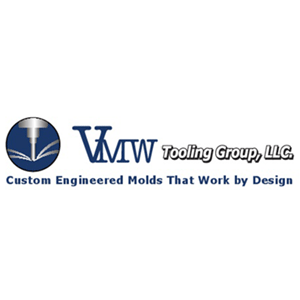Choosing the Right Graining Technique
VMW designs and builds a wide array of custom vacuum form molds throughout the world for our tier 1 and tier 2 customer base. Each mold is engineered to provide the best possible grain definition dependent on existing customer capital equipment that is to be used while taking into account which process the current part geometry for the specific project may dictate.
There are several key things that need to be considered prior to taking a process direction path on each and every project. Each project is specific in that each and every part has its own process challenges that must be reviewed and considered at the early stages of the project to insure a successful program launch. Some of the common vacuum form processes that may aid in your selection process may include:
IMG – In Mold Grain
The IMG vacuum form process provides the best grain definition on the molded part as the heated sheet material is imprinted / vacuum formed into an upper female grained mold surface. The upper mold surface is typically built as a nickel shell tool that contains the desired grain on the surface of the mold. When the sheet material is heated and presented to the mold, it is vacuum formed into the upper female nickel shell to provide an absolute 3D contoured skin that has the grain embossed onto the material.
In many instances when a “vac wrap” style part is required (vacuum formed skin bonded to the substraight), a lower CNC machined aluminum mandrill can hold the injection molded substraight into position to then allow the imprinted sheet material to be vacuum formed over the lower male substraight to complete this “vac wrap” process. Typically the sheet material has a heat activated adhesive that bonds to the injection mold substraight to provide a completed but untrimmed part that has bonded to the injection molded substraight. This process eliminates a good deal of post labor that is would be required for a “bladder wrap” or manually wrapped skin over the injection molded substraight.
The overall cost of tooling is higher with the IMG process but it has some distinct advantages in overall part quality and is typically used for higher volume automotive or other programs that requires a high volume of parts to be produced each and every day. One of the benefits of the IMG process is the reduction of visible grain stretch or grain “wash” over other processes.
IMG – In Mold Grain Benefits
- Reduction of visible grain stretch
- Different grain zones on a single component can be achieved
- Decorative elements can be added to the grain design
- Parts can have elaborate seams –stitching, French seams
- Insertion of Logo’s can easily be achieved
- Higher quality parts can be achieved
Vac wrap process
Vac Wrap is a form of Vacuum wrapping. The “vac wrap” process relies on grained sheet material to be used in conjunction with a lower side male vacuum form mandrill that holds the substraights that are to be wrapped. This process requires the grained roll good material to be heated and presented to the mold. In many instances an upper “blow box” or “suction box” is needed to pre-stretch the material to minimize grain loss during the vacuum form process. This pre-stretching of the material allows the roll good to maintain a higher degree of grain retention on the vertical side walls of the part. If pre-stretching of the material is not done as the material stretches down the vertical wall of the part the material gets thinner and thus compromises the initial grain depth and over all grain definition. The vac wrap process is an excellent process to use dependent on complexity of the part geometry as long as a slight amount of grain deformation or grain wash is allowable on the overall product quality.
Benefits of Vacuum Wrapping
- Faster process than manual wrapping. bladder wrapping or IMG
- Create single large uniform components (Example: Instrument panel or door panel)
- Lower tooling costs than IMG
- Shorter tooling lead time brings product to market faster than IMG

